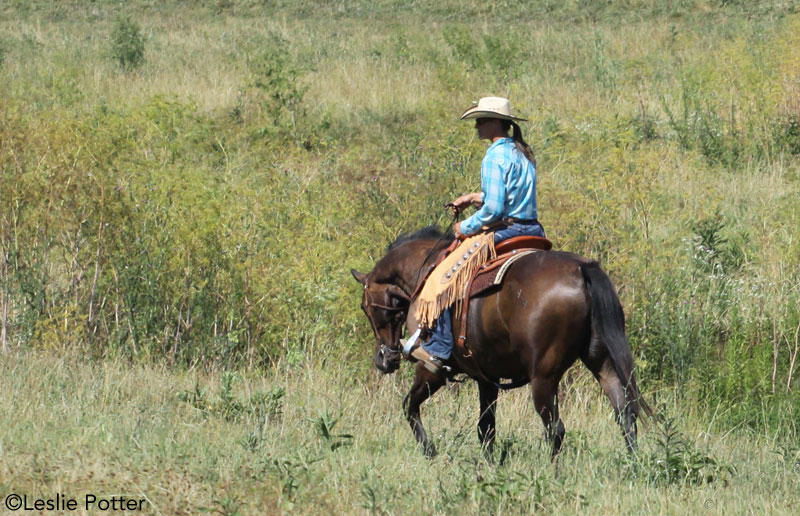Make sure you have the opportunity to test ride a saddle on your horse before committing to a purchase. Follow these basic steps when checking saddle fit:

- Set the saddle on your horse’s back without a saddle pad or girth. It should feel stable and sit level, not tilted dramatically upward or downward.
- Check that the saddle isn’t pressing down on the withers (the saddle is too wide) or perched high above them, pinching on the sides (the saddle is too narrow).
- The saddle should clear the horse’s spine with plenty of room on either side.
- The saddle’s panels or bars should make even contact along the horse’s back. Uneven contact will create uncomfortable pressure points. While pressing down on the seat with one hand, run your other hand under the saddle from front to back and check for excessive or uneven pressure.
- A gap in the middle indicates “bridging,” which puts pressure at the front and back of the saddle. If the pressure is concentrated in the middle of the saddle, it will also feel unstable and rock from front to back.
- If the saddle passes inspection so far, follow the same checkpoints with the saddle girthed up, and then with a saddle pad. If the fit still looks good, it’s time for you to mount up.
- Check for wither clearance again with your weight in the saddle, and make sure it feels balanced from front to back. Then, give it a try and see how your horse goes. Does he seem happy and willing to move forward? A short, choppy stride, balking, kicking out, pinned ears, tail swishing and other forms of resistance can indicate a poor fit.
- The saddle must fit you as well as your horse. Make sure you have the appropriate seat size; you shouldn’t feel like you’re crammed in the saddle or sliding around in a seat that’s too big.
- A saddle that fits you and your horse well will make it feel effortless to ride in a balanced position.
Back to Saddle up for the Trail >>
This article originally appeared in the August 2014 issue of Horse Illustrated magazine. Click here to subscribe!





